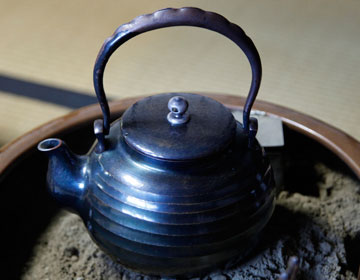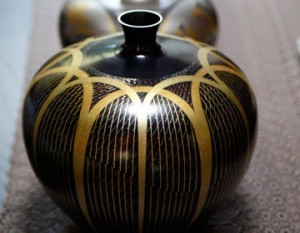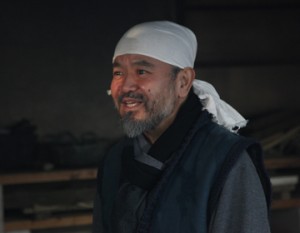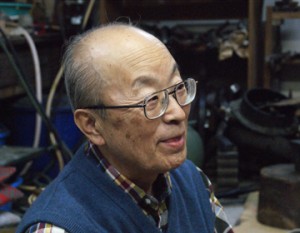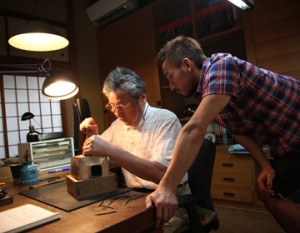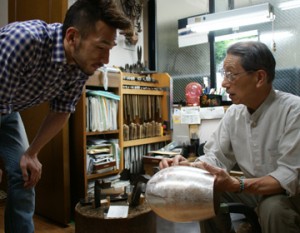Having coffee with copperware
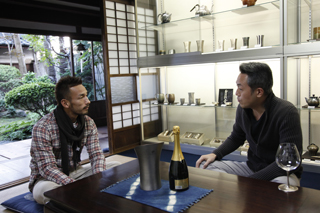
There are two cups of iced coffee in front of Nakata. One is a glass cup, the other is copperware. Nakata tastes them both to compare. “Coffee in copperware tastes less bitter,” says Nakata. “Yes, copperware makes the coffee more mellow. It is affected by copper ion. Not just coffee but ’sake’ and water tastes softer, too,” explained Motoyuki Tamagawa. “The coffee in copperware feels colder.” “That is also because of the copper.” “Can you make wine glasses too?” “Unfortunately, it is not a good fit with wine. The wine loses its fragrance.” Nakata, who likes both “sake” and wine looked disappointed.
Striking and compressing a sheet of copper
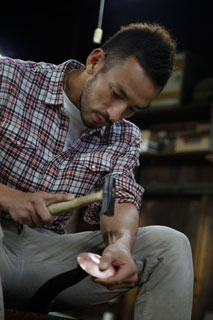
”Tsuiki” copperware has long been a local industry in Tsubame-city. Currently, this region is the only producer of ”tsuiki” copperware in Japan. We interviewed Motoyuki Tamagawa, the seventh generation owner of Gyokusendo which have been in business for 200 years in this area. The technique is literally striking copper with a hammer. Surprisingly, most of the pieces are made from a single sheet of copper. The copper sheet is placed on a protruded piece of iron called ”torikuchi” attached to the work table. Tamagawa carefully strikes the copper and it gradually changes shape. He calls this process, ”striking and compressing” but it is hard for Nakata to visualize this. ”I would understand if it is striking and expanding,” Nakata cocks his head, puzzled. Moving on to the workshop, today Nakata will try making a large ”sake” cup. Tatsushi Tamagawa, the instructor for the day strikes a sheet of copper. ”Okay, you try Nakata-san ,” says Tamagawa as he hands Nakata the hammer and the sheet of copper. Nakata tries to imitate Tamagawa and struck the copper but it is more difficult than he expected. Nakata grew quieter and he almost shouted, ”It is much easier to bend it by hand when we heated this thing” However, he regained composure and continued to work as instructed and moved on to the next process.
Alluring deep colors
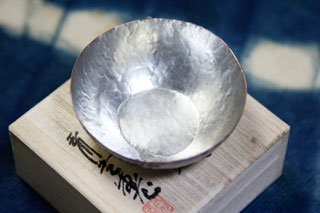
He inserted the “sake” cup into the furnace, melted the tin and applied the film-like tin to the cup. Last, he dipped the cup into liquid potassium sulfide, artificially rusting it to fasten the color. You can change the color by polishing it but Nakata chose to keep the bluish black glimmer acquired at this stage. “It’s so difficult when you actually try it, ” says Nakata. He seemed to be filled with deep emotion as he holds the completed cup. The greatest appeal of “Tsuiki” copperware is the beautiful texture added in the final process. One sighs at the beauty of deep coloring and its soft glimmer. Craftsmen’s skills passed on for generations make it possible for such beautiful vessel to be made from a single sheet of copper.



